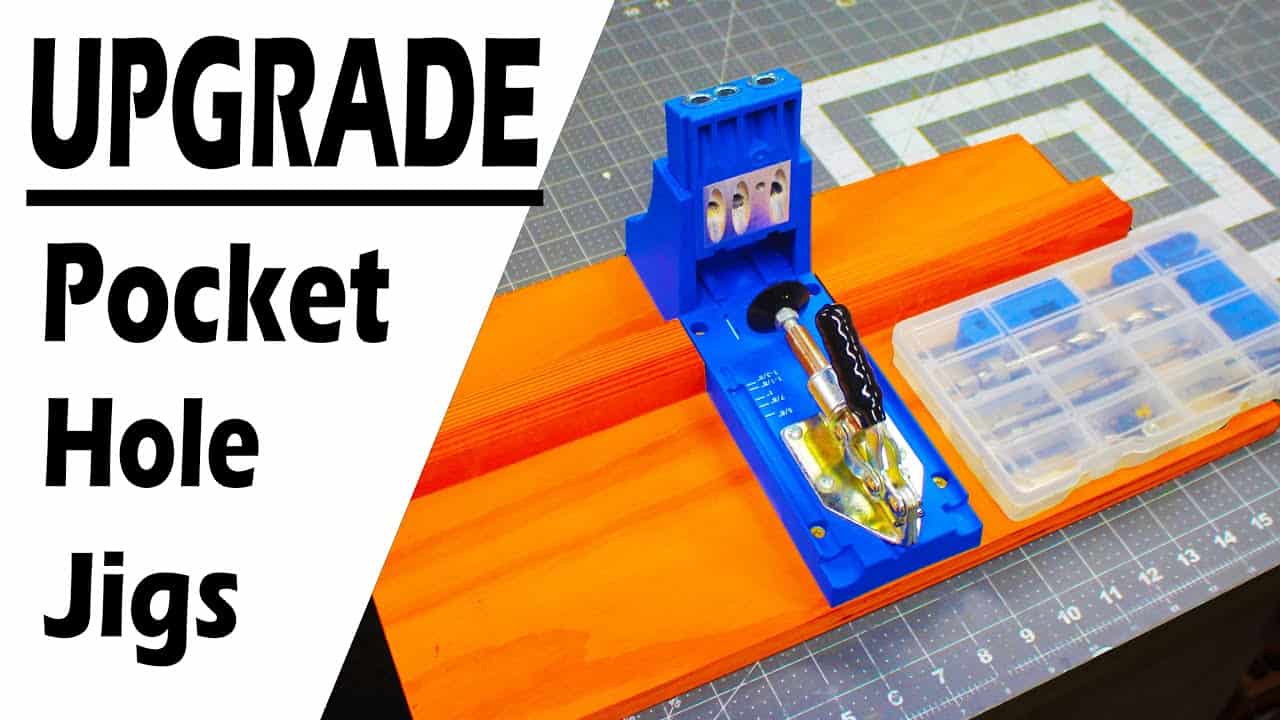This project was built and designed by Clinton from Specific Love Creations.
It’s a compact upgrade that turns a standard pocket hole jig into a more stable, versatile, and shop-friendly station with integrated accessory storage and wall mounting options.
By mounting the jig to a wider base and adding support wings, Clinton solves common frustrations with narrow jigs—like tipping boards and lost accessories—while keeping everything organized and off the workbench when not in use.
Watch the full video and subscribe to Clinton’s channel:
Why Modify a Pocket Hole Jig?
Pocket hole jigs are great for making quick, strong joints, but they’re often narrow and a little awkward in their factory form. Clinton’s upgrade fixes three common issues woodworkers face:
Thin boards tend to tilt or tip when drilling pocket holes due to the narrow base.
Small accessories like bits, collars, and drivers are easy to misplace.
Permanent mounting on a workbench eats up valuable space in small shops.
By mounting the jig to a wide, solid base, Clinton improves support and alignment during drilling. He also includes a detachable storage organizer and a hanging system so the entire unit stays accessible without cluttering the bench.
Design Goals and Functionality
The upgraded jig station provides four core improvements:
- A broader platform that supports boards during drilling.
- A stable base that can be used on the bench or clamped to it.
- Integrated accessory storage to keep bits and collars within reach.
- Wall-mounting capability to keep the jig out of the way between uses.
The entire design is flexible and can be adjusted to fit different jig brands or shop layouts. Clinton focuses on improving functionality without making the jig bulky or hard to move.
Building the Base and Support Wings
The main platform is cut from a thick, sturdy board that resists rocking on uneven surfaces. Its width is chosen to provide equal support on both sides of the jig, while the depth allows it to rest close to the edge of the workbench when clamped.
Clinton secures the jig using its factory mounting points and fastens it with appropriately sized screws. This keeps the jig solidly in place while avoiding damage to plastic components.
Side wings, cut to match the height of the jig, are added to each side. These provide extra surface area for clamping and prevent boards from tipping sideways. The wings can be glued for a permanent setup or screwed for easy replacement if needed.
Keeping Accessories Organized
One of the standout features of this build is the removable storage solution. Clinton modifies a small plastic organizer with Velcro strips to create a detachable compartment for jig accessories.
By attaching the loop side to the base and the hook side to the organizer (or vice versa), the storage container can be repositioned or removed easily. It stays secure during use but can be detached for travel or cleaning.
This prevents tiny parts from disappearing into drawers or rolling off the bench. Everything stays visible, protected, and ready to use when needed.
Wall-Mounting for Easy Access
To keep the jig station from taking up bench space, Clinton builds in two mounting options:
- A French cleat on the back allows for quick hanging and removal.
- Alternatively, he suggests drilling keyhole-style holes to fit hooks or screws on the wall.
Both methods work well depending on your shop setup. French cleats offer more stability, while holes require less hardware and wall space.
Potential Drawbacks and Tips
No shop solution is perfect, and Clinton shares a few lessons learned:
- If the base is mounted with a cleat, it may sit unevenly on the bench, creating a gap underneath. Placing the base against the bench edge helps compensate.
- Plywood can warp slightly over time, especially with changes in humidity. Using stable, thick hardwood or sealing the plywood may help extend the jig station’s lifespan.
- Fastening the wings with screws (instead of glue) makes it easier to reuse or replace them if needed.
These are minor trade-offs in an otherwise simple and effective build. The project stays adaptable while solving real shop workflow problems.
More Customization Ideas
If you’re building your own version of this jig station, here are a few ways to personalize it:
- Add a small wood tray instead of a plastic organizer for a custom look.
- Use tee nuts or thumb screws to make the jig easily removable from the base.
- Include a bench stop or side clamp for holding angled or irregular pieces.
- Reinforce the base with a stiffening rib if using thinner material to keep weight down.
These optional tweaks let you fine-tune the station for your jig model and work habits.
A Small Project with Big Benefits
Clinton’s upgraded jig station is a great example of how a little shop time can make your workflow smoother and more efficient. With better stability, built-in storage, and the ability to mount it out of the way, this is a worthwhile project for anyone who uses pocket holes regularly.
It’s easy to build, low cost, and highly functional—and most importantly, it solves real problems without complicating the process.
Watch the full video and subscribe to Clinton’s channel:
